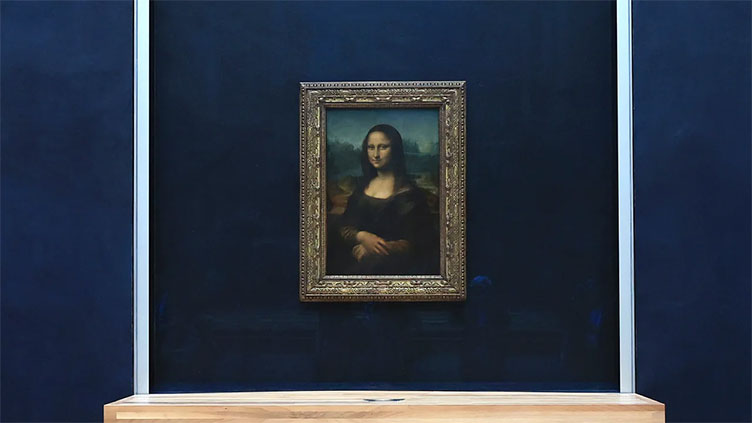Rare compound detected in the 'Mona Lisa' reveals a new secret, study says

WeirdNews
The finding provides fresh insight into how the work from the early 1500s was painted
(Web Desk) - Leonardo da Vinci was a painter, inventor and anatomist, to name just a few of his talents — and now, you can add innovative chemist to the polymath’s many gifts.
It turns out the master artist was more experimental with his renowned “Mona Lisa” than previously thought — and was likely the creator of a technique seen in works created a century later, a new study suggests.
By using X-ray diffraction and infrared spectroscopy, a team of scientists in France and Britain has detected a rare mineral compound within the iconic piece.
The finding provides fresh insight into how the work from the early 1500s was painted, according to the study recently published in the Journal of the American Chemical Society.
Along with lead white pigment and oil, the compound — known as plumbonacrite — was found in the base layer of the paint.
A study published in 2019 had identified the mineral in several 17th-century works by Rembrandt, but researchers had not come across it in works from the Italian Renaissance until the new analysis.
Plumbonacrite forms when lead oxides combine with oil. Mixing these two substances on a palette is a technique that later artists like Rembrandt used to help the paint dry, according to the study.
Detecting the rare compound in the “Mona Lisa” suggested that Leonardo could have been the original precursor of this approach, said Gilles Wallez, an author of the latest study and a professor at Sorbonne University in Paris who also was a coauthor on the 2019 report.
“Everything which comes from Leonardo is very interesting, because he was an artist, of course, but he was also a chemist, a physicist — he had lots of ideas, and he was an experimenter … attempting to improve the knowledge of his time,” Wallez said.
“Each time you discover something on his processes, you discovered that he was clearly ahead of his time,” he said.
The “Mona Lisa,” like many other paintings from the 16th century, was created on a wood panel that required a thick base layer, Wallez said.
The researchers believe that Leonardo had made his mixture of lead oxide powder with linseed oil to produce the thick coat of paint needed for the first layer, while unknowingly creating the rare compound.
Nowadays, researchers aren’t allowed to take samples from the masterpiece, which resides at the Louvre in Paris and is protected behind glass, Wallez said.
Using a 2007 microsample that had been taken from an area of the artwork just behind the frame, however, scientists were able to analyze the paint by using a high-tech machine called a synchrotron.
The particle accelerator allowed the team to study the speck’s composition on a molecular level.


